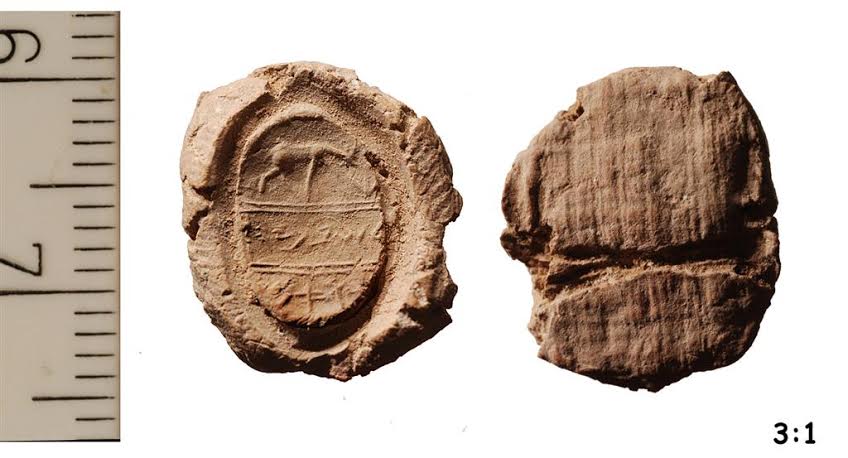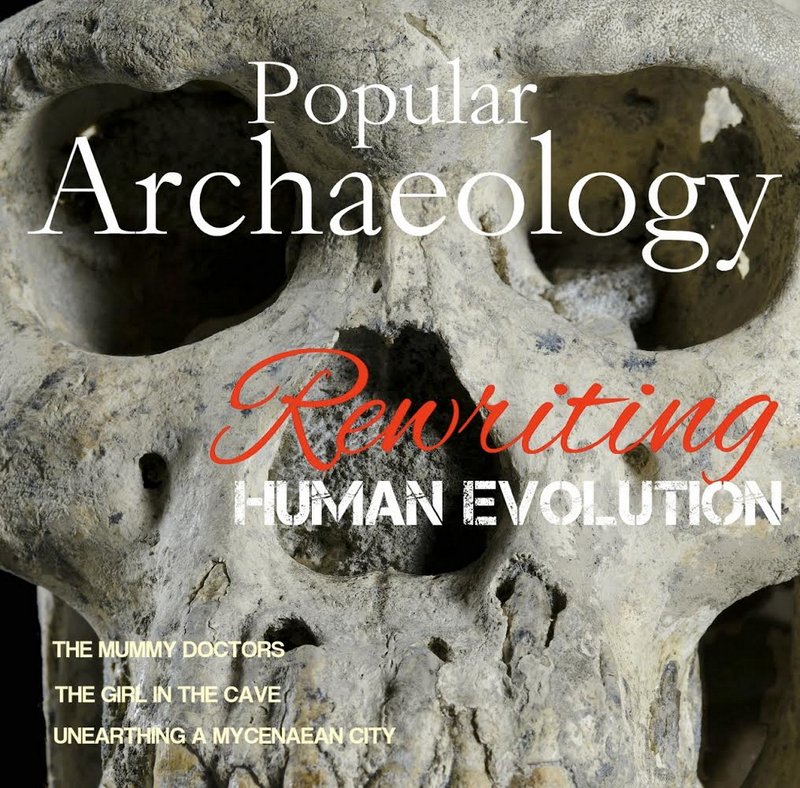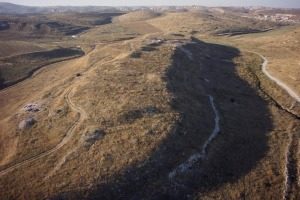
An archaeological team has uncovered remains of what may have been an administrative center during the period when Judahite kings ruled out of ancient Jerusalem.
Led by project director Avraham Faust, an archaeologist with Bar-Ilan University near Tel Aviv, Israel, excavations at the site of Tel ‘Eton located on the edge of the fertile Shephelah and the Hebron hill country to its east have revealed structures, artifacts, and fortifications that tell of an ancient city that historically straddled the eastern edge of the lowlands between the biblical kingdom of Judah and Jerusalem in the east and the cities of the Philistines on the Mediterranean coastal plains of the west.
Among the finds was a large, 240 sq.m. 8th century BCE house structure built following a four-room plan typical of ancient Israelite dwellings, featuring high-quality construction and, with its location at the highest point on the mound, commanding a strategic view of all areas below. The ancient building, along with its town context, was strategically located at the cross-roads of important north-south and east-west routes, set above fertile agricultural country.
“The structure was excavated, almost in its entirety, and was composed of a large courtyard with rooms on three sides,” stated Faust. “The building was nicely executed, including ashlar stones in the corners and openings. Hundreds of artifacts were unearthed within the debris, including a wide range of pottery vessels, loom weights, many metal objects, botanical remains, as well as many arrowheads, evidence of the battle which accompanied the conquest of the site by the Assyrians.”
Near the end of the 8th century, in 701 BCE according to biblical and Assyrian records, invading armies under the Assyrian king Sennacherib destroyed cities and towns throughout the Kingdom of Judah, sparing Jerusalem but utterly devastating the settlements of the Shephelah region, on the eastern edge of which Tel ‘Eton is located.
Faust and his colleagues suggest that the building may have been the residence of a Judean governor, responsible for administering a region under its control under the Judahite kingdom centered in Jerusalem.
Tel ‘Eton has also been identified with a more ancient Canaanite city known as Biblical Eglon (Josh 10:34-36; 15:39), and Faust’s team has uncovered evidence of occupation dating as far back as the third millennium BCE (the Early Bronze Age).
But the most abundant finds for the early periods were dated to the Late Bronze Age (ca. 1550-1200/1150 BCE).
“Remains from this period were unearthed in practically every square in the section in which we dug deep enough,” stated Faust, “and in-situ (left in-place by the early inhabitants) vessels were discovered even down the slopes, signifying that the town was large.”
The Late Bronze Age is well documented in Egyptian sources, such as the el Amarna letters, which are mostly diplomatic correspondence on clay tablets that have provided an historical accounting of the affairs, especially as they relate to Egyptian/Canaanite relations, during the Egyptian New Kingdom.
In addition, Faust’s team has uncovered a destruction layer dated to the Late Bronze Age town.
“The evidence regarding the end of the Late Bronze Age town hints that it was destroyed, probably in the 1st half of the 12th century BCE,” stated Faust in a recent report. “This was part of a wider wave of destructions throughout the region. The causes of the destruction are not clear, [but] various suggestions were raised regarding the identity of the responsible party, including the Israelites, the Philistines and the Egyptians.”
____________________________________
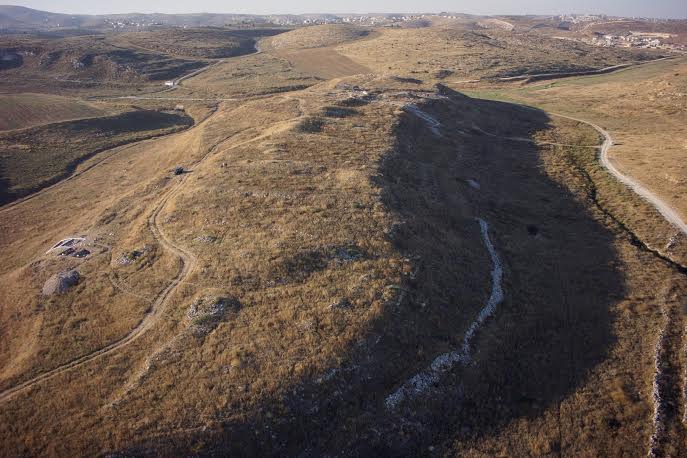 An aerial photograph of Tel ‘Eton, looking south (photographed by Sky View\ Griffin Aerial Imaging)
An aerial photograph of Tel ‘Eton, looking south (photographed by Sky View\ Griffin Aerial Imaging)
____________________________________
A bulla excavated from Tel ‘Eton, with an inscription. (Photographed by Zev Radovan)
_____________________________________
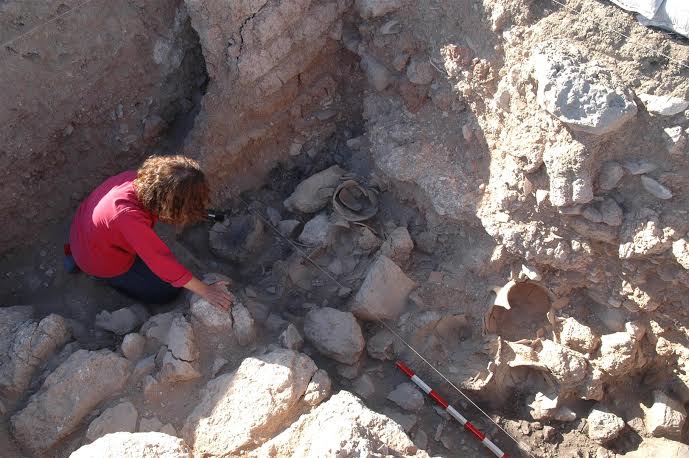 A team member excavating within the Assyrian destruction layer. Courtesy Bar-Ilan University Expedition to Tel ‘Eton
A team member excavating within the Assyrian destruction layer. Courtesy Bar-Ilan University Expedition to Tel ‘Eton
_____________________________________
Faust writes more about the excavations and discoveries at Tel ‘Eton in the upcoming Spring issue of Popular Archaeology Magazine.
Individuals interested in participating in or supporting the Tel ‘Eton excavation project may learn more at the project website.
_____________________________________
Read about the most fascinating discoveries with a premium subscription to Popular Archaeology Magazine. Find out what Popular Archaeology Magazine is all about. AND MORE:
On the go? Get the smartphone version of Popular Archaeology as an app or as an ebook.
Just released!
The special new premium quality print edition of Popular Archaeology Magazine. A beautiful volume for the coffee table.
Travel and learn with Far Horizons.
____________________________________________
Popular Archaeology’s annual Discovery Edition eBook is a selection of the best stories published in Popular Archaeology Magazine in past issues, with an emphasis on some of the most significant, groundbreaking, or fascinating discoveries in the fields of archaeology and paleoanthropology and related fields. At least some of the articles have been updated or revised specifically for the Discovery edition. We can confidently say that there is no other single issue of an archaeology-related magazine, paper print or online, that contains as much major feature article content as this one. The latest issue, volume 2, has just been released. Go to the Discovery edition page for more information.

